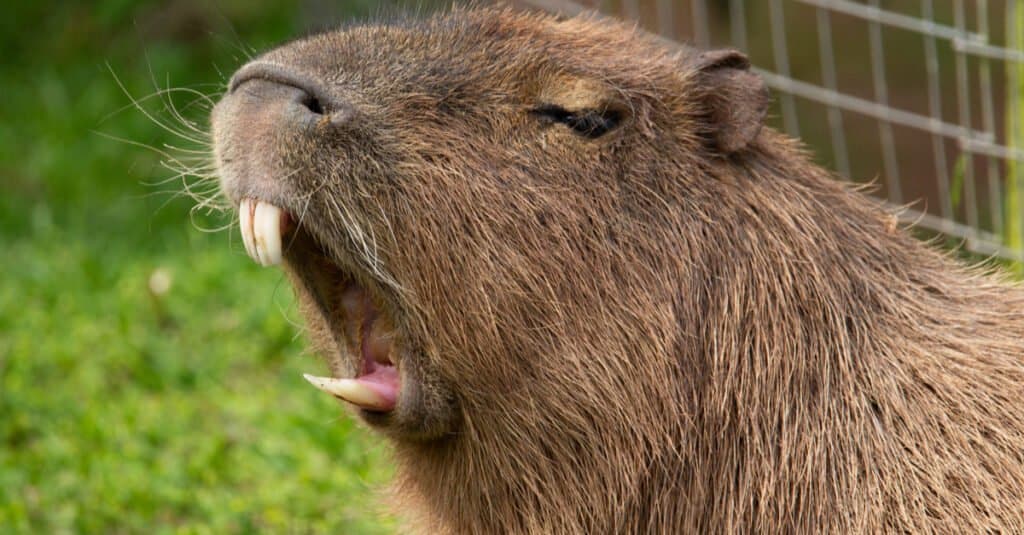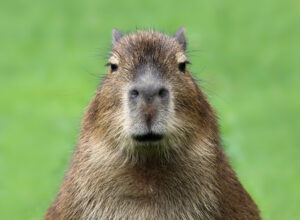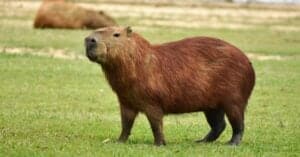If you think that rodents are typically tiny in size and that beavers are gigantic when compared to other members of the family Rodentia, then perhaps you haven’t yet met the largest rodent of them all – the capybara. As rodents, capybara teeth have a unique characteristic that not all mammals have: they never stop growing. Most people might assume that capybaras, like mice, have a voracious appetite that drives them to constantly gnaw. However, there is a deeper reason behind their constant chewing.
The capybara is the largest rodent in the world, growing up to 4.6 feet in length and weighing up to 165 pounds. Despite the capybara’s humongous size for rodents, they are still a favorite when it comes to exotic pets. This is because capybaras are known to be very friendly to humans, and are in fact one of the friendliest wild animals on the planet. Capybaras are semi-aquatic mammals usually settling in South American water-logged areas. Their anatomy has adapted to life in water, and that is represented by the webbed skin in between their toes that helps them in swimming.
What Kind of Teeth Do Capybaras Have?

©Ian Peter Morton/Shutterstock.com
Capybaras are rodents, which means they possess the same unique characteristic that all rodents have: long, ever-growing pairs of incisors. Most rodents, including capybaras, do not have canines, leaving a gap between the two incisors and premolars, called diastema. Following the diastema is a pair of premolars on each side of the cheek, and three pairs of molars at the back of the mouth.
Rodents are known for their continuous gnawing. In fact, the word “rodent” was originally derived from a Latin word meaning “to gnaw”. This is because they have long incisors that never stop growing for as long as they live. Imagine human fingernails that need to be trimmed regularly or they will overgrow and will cause health problems. That is how rodent incisors work.
As rodents, capybaras share the same distinct dental structure. Capybaras have two sharp pairs of incisors that are long, strong, and that never stop growing. Capybara front teeth can measure beyond 3 inches if they keep on growing and can cause some serious dental problems.
How Many Teeth Do Capybaras Have?

Capybaras have 20 teeth in total.
©iStock.com/nastenkin
Capybaras have a total of 20 teeth. Four of these are sharp incisors that help them in gnawing wood or plant material. The incisors or front teeth are followed by four premolars, one pair on the upper jaw and another pair at the lower mandible. Succeeding the premolars are 12 molar teeth, three pairs located up and down. Collectively, the premolars and molars are called ‘cheek teeth’.
The typical dental formula for capybaras is: Incisors 1/1; Canines 0/0; Premolars 1/1; Molars 3/3 = 20. Capybaras are herbivores that eat a diet that consists only of plant materials such as grass, aquatic plants, bark, and roots. Since they do not feed on meat or animal flesh, they wouldn’t need sharp canines to help them tear flesh. The capybara’s lack of canines leaves a gap that helps them chew their food better.
What Do Capybaras Use Their Teeth For?

Capybaras use their incisors to sheer plants into chewable amounts.
©Pertfoto/Shutterstock.com
Capybaras use their front teeth or incisors to shear and cut their plant-based food into smaller, more chewable materials. Then they push them back towards the rear part of their mouth to be crushed and ground by their cheek teeth.
The upper and lower pairs of incisors inside a capybara’s mouth work together like a pair of scissors to cut grasses from the ground.
Why Do Capybaras Keep on Chewing?
Capybaras are born with extra-long incisors that keep on growing throughout their lives. However, these front teeth can also get in the way of feeding if they get too long. Capybaras constantly put their incisors in use in order to wear them down and keep them at a reasonable length.
Capybaras browse and grind their teeth on tubers, sugar cane, barks, tough grasses, and aquatic plants to help trim down their teeth. Sometimes, capybaras can chew on stones too, which clearly shows how strong their teeth are. It is also common for capybaras to lose one or two of their incisors, but there is no need to worry because they can quickly grow them back.
The capybara’s incisors can grow more than 8 centimeters long, and if they grow longer than needed, this can hinder them from properly eating their food which can lead to starvation and malnutrition.
How Strong Are Capybara Teeth?
Capybara teeth are surprisingly strong. Capybaras have teeth that are even tougher than mice and rats. Rats and mice often chew on cardboard boxes and plastic containers, while capybaras chew stones like chewing gum.
Capybaras continuously grind their front teeth on surfaces so they wouldn’t grow longer than necessary. Apart from gnawing on food, capybaras also grind their teeth against each other. This process is somehow similar to grinding a knife blade onto a stone to sharpen it. This way, the friction caused between the upper and lower incisors keeps the capybara teeth short and sharp as a chisel.
The front portion of a capybara’s teeth is made from hard enamel making it more resistant to wear, while the back portion is made of soft dentine. The dentine at the back wears quicker than the enamel in the front, so each time the capybara gnaws, the front teeth wear at an angle. This creates sharp, bevel-edged incisors for a more effective gnawing.
Do Capybaras Bite?

Capybaras only bite when provoked or threatened.
©Horus2017/Shutterstock.com
Capybaras are usually friendly to humans and are normally shy and obedient. They are not only friendly to humans but other wild animals as well, such as birds, monkeys, camels, and others. However, provoking and threatening a capybara can drive them to bite. Capybaras are strong and their teeth are sharp, so their bite can be very painful.
The photo featured at the top of this post is © Pertfoto/Shutterstock.com
Thank you for reading! Have some feedback for us? Contact the AZ Animals editorial team.







